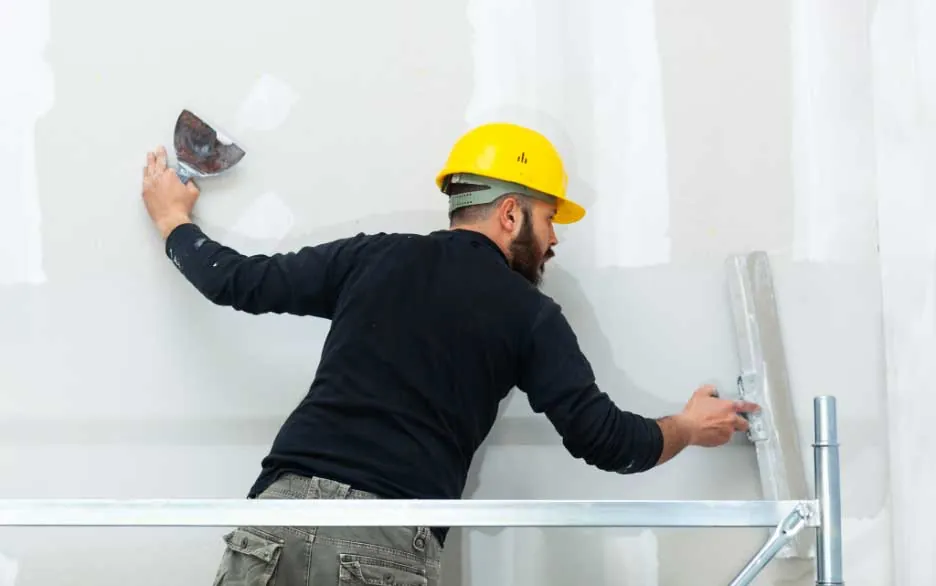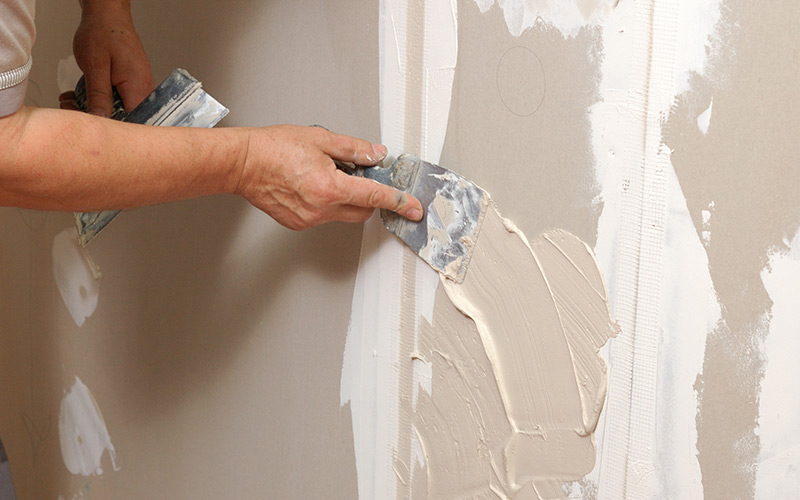Drywall Setup Made Easy: Tips for Perfect Outcomes
Drywall setup is often perceived as a daunting task, yet with the ideal method and understanding, it can become a workable venture. Picking quality materials and preparing the installation location are vital very first steps that establish the foundation for success. Understanding techniques for reducing, hanging, and ending up drywall can dramatically impact the outcome. As we check out these necessary pointers, you may find that also the smallest changes in your method can cause extremely boosted outcomes, leaving you to take into consideration exactly how these methods can change your following task.
Picking the Right Materials
Picking the ideal products for drywall setup is important to attaining a resilient and aesthetically pleasing surface. drywall repair. The main component, drywall sheets, normally come in numerous thicknesses, with 1/2-inch sheets being common for interior walls. For locations calling for additional moisture resistance, such as washrooms or cooking areas, think about making use of eco-friendly board or concrete board, which are specifically made to stand up to humidity

In addition, picking the appropriate fasteners-- either screws or nails-- is important for safeguarding the drywall to the framing. Drywall screws are generally preferred for their holding power and reduced threat of popping. Consider the finishing touches such as guide and paint, which not only improve the appearance but likewise safeguard the drywall from dampness and wear.
Preparing the Setup Area
Before starting the drywall setup process, it is important to prepare the setup location completely. This preparation includes numerous vital actions to ensure a smooth and successful job. Initially, clear the area of any furniture, home appliances, or blockages that might prevent gain access to. A clean work space minimizes the threat of damages to existing things and permits reliable motion throughout setup.
Following, inspect the walls and ceiling for any blemishes, such as splits, openings, or mold and mildew. Address these issues in advance; spot any type of problems and allow adequate time for fixings to completely dry. In addition, guarantee that electrical outlets, switches, and pipes are appropriately placed and accounted for, as this will impact drywall positioning.
Think about the ecological problems as well. A stable temperature level and humidity level are crucial for optimal bond and performance of the drywall products. If required, use a dehumidifier or heating system to create ideal problems.
Cutting and Hanging Drywall
The key to effective drywall installment exists in the exact cutting and dangling of the panels. Use a straight edge and an utility knife to rack up the drywall along your dimensions, after that snap it along the racked up line for a clean break.

Always function from the top down and entrusted to right, making sure that you preserve a staggered pattern to improve security. Effectively hanging the drywall sets the structure for a smooth surface, inevitably resulting in superior outcomes in your drywall project.
Taping and Mudding Methods
While proper cutting and hanging of drywall establishes the phase, the next important action entails grasping taping and mudding strategies to make sure a smooth finish. Insulation is vital for reinforcing joints and protecting against cracks; it involves installing tape right into the applied joint compound (mud) Begin with a high quality fiberglass or paper tape, applying the tape go to my blog over the joint and pressing it right into the wet mud using a taping knife, making sure pop over to this web-site no air bubbles stay.
As soon as the tape remains in place, use a thin layer of joint compound over the tape, feathering the sides to produce a smooth change to the drywall surface. Permit this layer to dry totally before sanding it lightly to get rid of blemishes. Repeat this procedure, using added layers of mud as necessary-- typically 2 to 3 layers-- while slowly widening the application area with each layer to accomplish a seamless look.
After the last coat dries out, sand the surface with a fine-grit sandpaper till smooth. drywall repair. Remember to wear a mask during sanding to avoid breathing in dirt particles. Grasping these taping and mudding strategies is important for attaining a professional-quality surface in your drywall installation
Finishing Touches for Perfection
Attaining a remarkable drywall installation goes past taping and mudding; it finishes in the ending up touches that raise the total appearance. These last steps are vital in making sure a professional-grade surface that enhances the visual appeals of your area.
Begin by fining sand the dried out joint substance to produce a smooth surface. Use a fine-grit sandpaper and a fining sand block or post sander for optimum control. Pay specific attention to sides and edges, as these locations tend to need even more precise work. After fining sand, clean down the wall surfaces with a moist cloth to eliminate any dust fragments, ensuring a tidy surface for paint.
Following, use a guide specifically designed for drywall. This action is crucial, as it aids seal the joint substance and gives an uniform base for the topcoat. When the guide dries, evaluate for any type of imperfections, and repair as required.
Conclusion
Finally, effective drywall installation depends upon the mindful selection of products, extensive preparation of the setup location, and precise implementation of reducing and hanging methods. Mastery of taping and mudding processes is important for achieving a smooth coating. Additionally, focus to ending up touches, including priming and touch-ups, ensures a professional-grade outcome. By adhering to these guidelines, the high quality of workmanship can be substantially enhanced, adding to the general visual and functionality of the space.
Drywall installation is often regarded as an overwhelming job, yet with the ideal strategy and expertise, it can end up being a manageable undertaking.Choosing the suitable products for drywall setup is vital to attaining a durable and cosmetically pleasing finish.Prior to beginning the drywall setup process, it is necessary to prepare the setup location extensively. Mastering these taping and mudding techniques is critical for achieving a professional-quality surface in your drywall installation.
In verdict, successful drywall installment pivots on the mindful selection of products, thorough prep work of the installment location, and accurate implementation of reducing and hanging techniques.